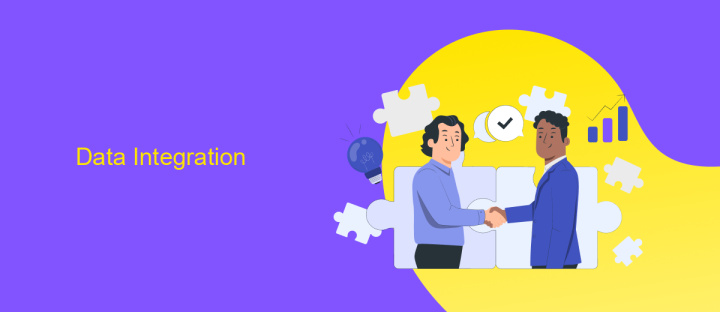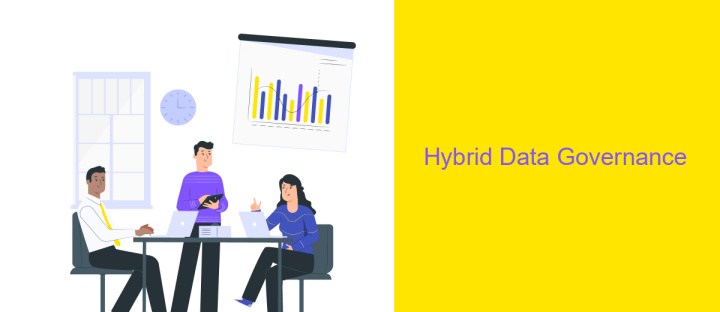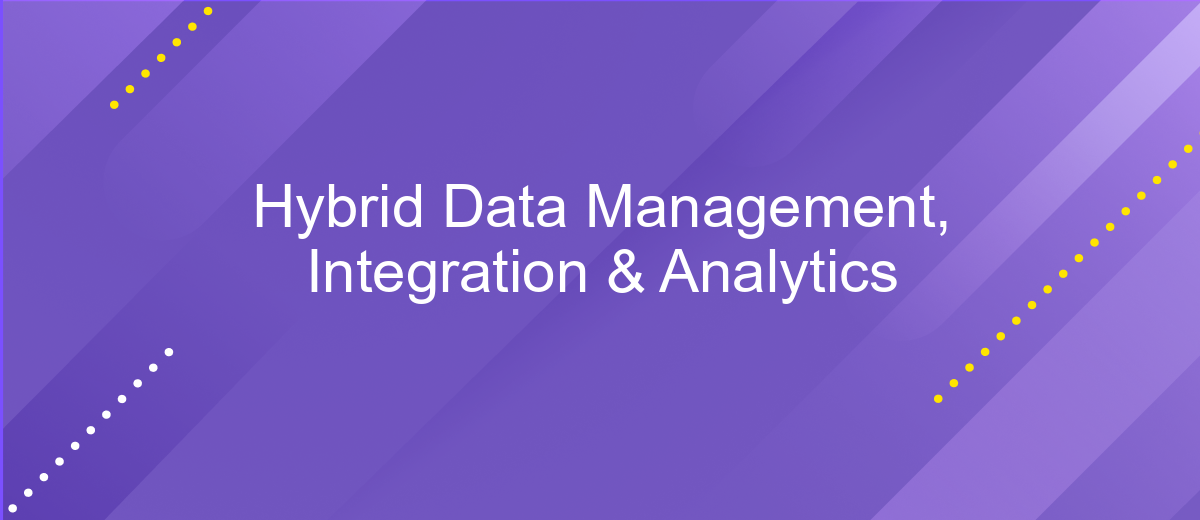Hybrid Data Management, Integration & Analytics
In today's data-driven world, organizations are increasingly relying on hybrid data management, integration, and analytics to harness the full potential of their data assets. By seamlessly combining on-premises and cloud-based solutions, hybrid approaches enable businesses to optimize performance, enhance scalability, and derive actionable insights. This article explores the key benefits and strategies for implementing effective hybrid data solutions.
Hybrid Data Management
Hybrid Data Management is a modern approach that combines the strengths of both on-premises and cloud-based data solutions. This strategy allows organizations to leverage the scalability and flexibility of the cloud while maintaining control over sensitive data within their local infrastructure. By integrating these two environments, businesses can optimize performance, reduce costs, and enhance data security.
- Scalability: Easily scale up or down based on demand.
- Cost Efficiency: Reduce expenses by utilizing cloud resources for non-critical data.
- Data Security: Maintain control over sensitive data on-premises.
- Flexibility: Seamlessly integrate various data sources and applications.
- Performance Optimization: Distribute workloads to optimize system performance.
Implementing a hybrid data management strategy requires careful planning and execution. Organizations must evaluate their specific needs, choose the right tools and technologies, and ensure seamless integration between on-premises and cloud environments. By doing so, they can achieve a more agile, efficient, and secure data management system that supports their business objectives.
Data Integration

Data integration is a critical aspect of modern data management, enabling organizations to combine data from various sources into a unified view. This process ensures that data from different systems, such as databases, applications, and external sources, can be seamlessly accessed and analyzed. Effective data integration helps in breaking down data silos, improving data quality, and facilitating better decision-making. It also supports real-time data processing, which is essential for businesses to stay competitive in today's fast-paced environment.
One of the tools that can significantly simplify the data integration process is ApiX-Drive. This service allows users to automate data flows between different applications and systems without requiring extensive technical expertise. By using ApiX-Drive, businesses can easily set up integrations, ensuring that data is consistently synchronized across platforms. This not only saves time but also reduces the risk of errors associated with manual data handling. As a result, organizations can focus more on analyzing data and deriving actionable insights, rather than dealing with the complexities of data integration.
Hybrid Analytics

Hybrid analytics represents a transformative approach in data analysis, combining the strengths of both on-premises and cloud-based systems. This method allows organizations to leverage the scalability and flexibility of cloud solutions while maintaining the control and security of on-premises environments. By integrating these two paradigms, businesses can achieve more comprehensive insights and faster decision-making processes.
- Enhanced data accessibility: Combining cloud and on-premises systems ensures that data is accessible from multiple sources, providing a more holistic view.
- Cost efficiency: Organizations can optimize costs by utilizing cloud resources for heavy computational tasks while keeping sensitive data on-premises.
- Scalability: Hybrid analytics solutions offer the ability to scale operations seamlessly, accommodating growing data volumes and varying workloads.
- Improved security: Sensitive data can be stored on-premises, ensuring compliance with regulatory requirements while still benefiting from cloud capabilities.
Implementing hybrid analytics requires careful planning and execution to ensure seamless integration and optimal performance. Organizations must evaluate their specific needs and choose the right tools and platforms to create a balanced and efficient hybrid environment. By doing so, they can unlock the full potential of their data, driving innovation and gaining a competitive edge in the market.
Hybrid Data Governance

Hybrid Data Governance is essential for organizations that manage data across both on-premises and cloud environments. It involves establishing policies and procedures to ensure data quality, security, and compliance, regardless of where the data resides. Effective governance helps organizations mitigate risks and harness the full potential of their data assets.
One of the key challenges in hybrid data governance is maintaining consistency in policies across diverse environments. This requires a unified approach that encompasses various data sources, formats, and storage locations. Organizations must also address issues related to data privacy, regulatory compliance, and access control.
- Define clear data governance policies and procedures.
- Implement robust data security measures.
- Ensure compliance with relevant regulations.
- Maintain data quality and integrity.
- Facilitate seamless data integration and access.
By adopting a comprehensive hybrid data governance framework, organizations can effectively manage their data assets, reduce risks, and ensure that their data initiatives align with business objectives. This holistic approach enables better decision-making and drives innovation across the enterprise.
DataOps and MLOps
DataOps and MLOps are pivotal in modern data management, ensuring seamless integration, processing, and analysis of data across various platforms. DataOps focuses on improving the communication, integration, and automation of data flows between data managers and consumers. This approach not only enhances the quality and speed of data analytics but also ensures data governance and compliance. Tools like ApiX-Drive facilitate these processes by enabling easy integration and automation of data from multiple sources, streamlining the workflow and reducing the time to insights.
MLOps, on the other hand, extends these principles to machine learning models, emphasizing the operationalization and continuous delivery of ML models. It bridges the gap between data science and IT operations, ensuring that models are reproducible, scalable, and reliable. By incorporating MLOps, organizations can automate the deployment, monitoring, and management of ML models, thus accelerating their ability to derive actionable insights from data. Together, DataOps and MLOps create a robust framework for efficient and effective data-driven decision-making.
FAQ
What is Hybrid Data Management?
How does data integration work in a hybrid environment?
What are the key benefits of hybrid data analytics?
How can I ensure data security in a hybrid data environment?
What tools can help with automating data integration in a hybrid environment?
Apix-Drive is a simple and efficient system connector that will help you automate routine tasks and optimize business processes. You can save time and money, direct these resources to more important purposes. Test ApiX-Drive and make sure that this tool will relieve your employees and after 5 minutes of settings your business will start working faster.

